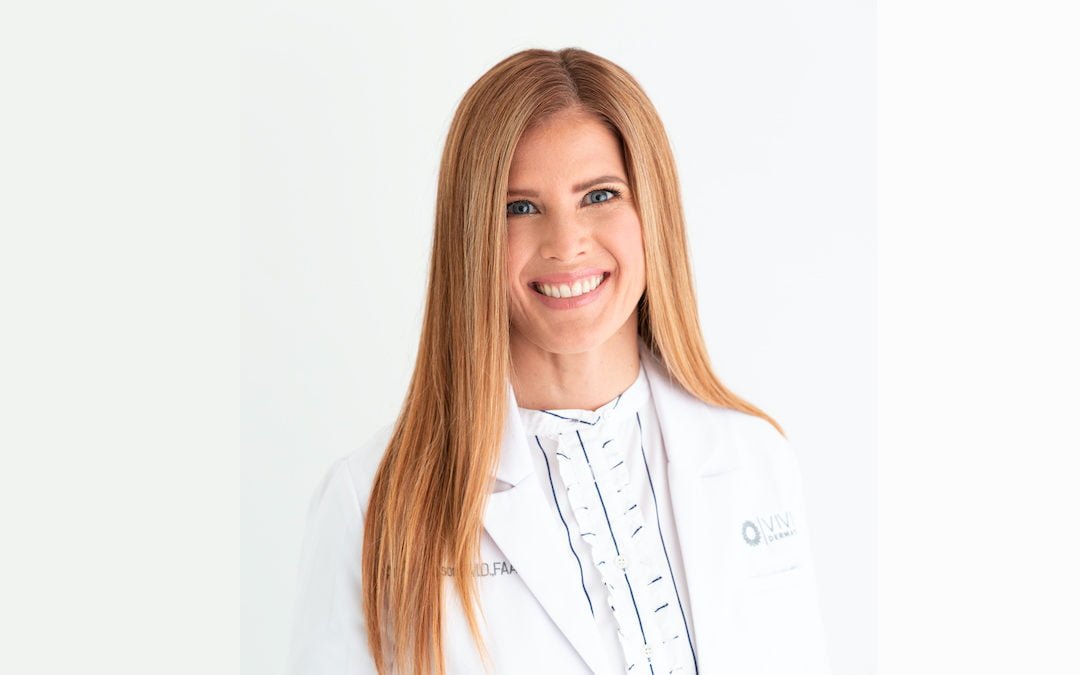April, who is currently director of the clinical advisory board and clinical implementation at PathologyWatch, always had a desire to pursue medicine; both her father and older brother are plastic surgeons. While she was itching for a career in medicine, her first choice was family practice. It wasn’t until she met an intern during her first rotation in her third year of medical school that she changed her mind about dermatology—and the connection was instantaneous.
Can you describe that defining moment when you knew dermatology was the right choice?
I heard a lecture by Sancy Leachman, MD, PhD—this charismatic, amazing physician-scientist—as she described how the first melanoma gene was identified. She told this compelling story of everyday events and interactions that led to an advance in the understanding of melanoma cancer genomics. The impact of that discovery struck me. It was my first encounter with academic medicine. I eventually worked as a research fellow for Dr. Leachman in her melanoma clinic.
How did that experience impact your work with PathologyWatch?
This opportunity is helping me get back to my roots in academic medicine: to use science to improve our diagnosis and treatment of patients. When we are talking about patients’ lives, can we be satisfied with 75, 80, or even 95 percent success? In medicine, we will always be searching for better ways of taking care of patients. That’s the idea: trying to push forward the knowledge we have to improve patient care. It’s how you can have a more significant impact on people. As the director of the clinical advisory board and clinical implementation at PathologyWatch, I am focused on advancing patient care and access by using technological solutions to enhance the laboratory services offered to dermatologists and their patients, both nationally and globally.
Based on your experience as a former client, how do you believe PathologyWatch is instrumental in helping dermatologists improve patient care?
We achieve this in two ways. First, I see digital pathology as a key to improving dermatology diagnostics through the enhanced correlation of microscopic and clinical skin findings. We provide digital slide images that are easily reviewed in real-time as dermatologists are making critical decisions for their patients.
Second, we help improve dermatology processes by integrating with many EMRs, which streamlines the clinical workflow. Sometimes, the technology that is supposed to help us ends up slowing us down or gets in the way of patient interaction. I understand the stresses and pressures that regularly happen in these dermatology clinics. And I know dermatologists and their staff are trying to provide the best care in a fast-paced environment. I want to help my specialty get it right 100 percent of the time.
This ultimately translates to providing optimized care and spending more time with patients, where we feel the most joy and connection in our jobs. This is what drives me.
My favorite part of being a dermatologist is the relationship I develop with my patients. You learn to trust each other. It’s a unique relationship as you help them make decisions for their care.
As a dermatologist, what are the rewards of working at PathologyWatch?
I feel fortunate to be a part of this fantastic team and to be surrounded by intelligent, kind, hard-working individuals, each using his or her expertise toward a common goal. I am learning so much about all these different aspects of medicine and business and computer science. It’s exciting to see what the combination of technological advances and human intelligence can do for medicine, which before was just science fiction. I also love interacting with other dermatologists, helping them find what works for them and improves their practice, which I hope leads to more success and joy in their work lives.
What do you do when you are not working?
I live with my husband and four children in southern Utah. My family spends a lot of time boating and playing outdoors.

